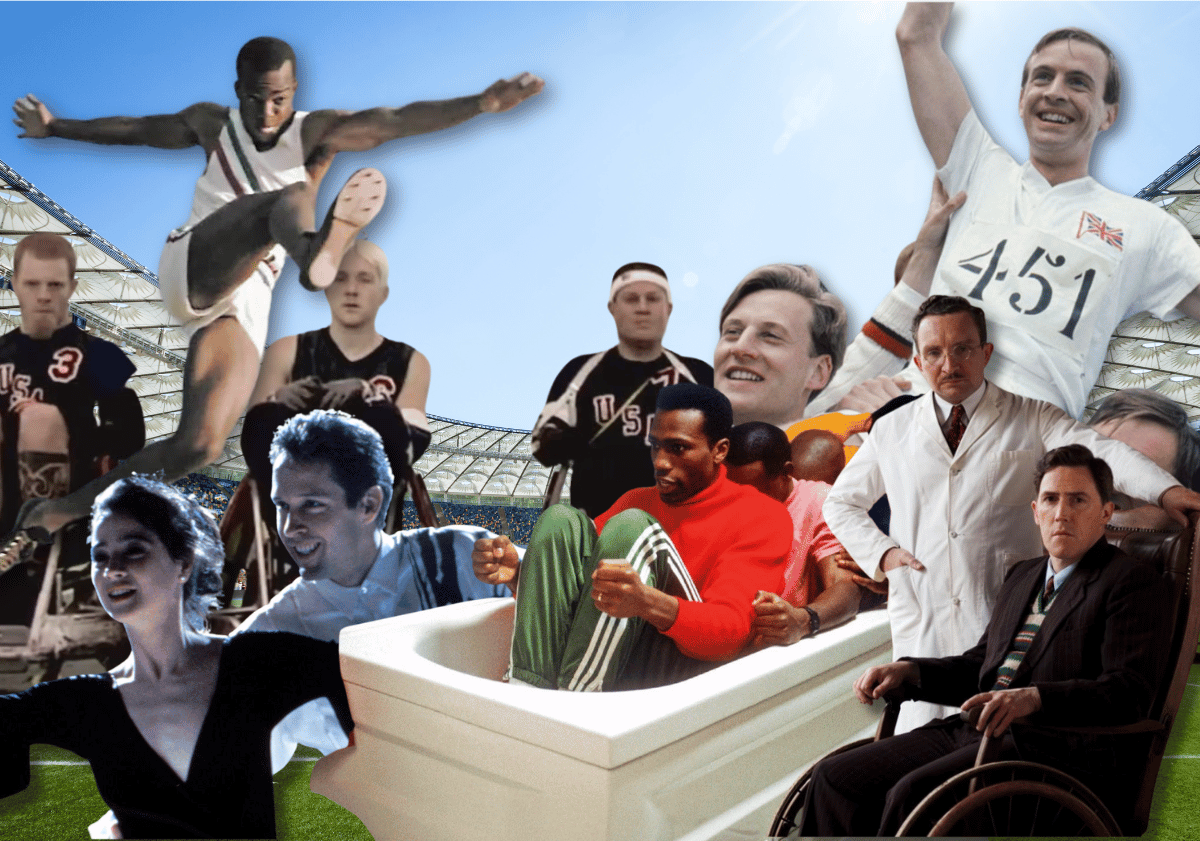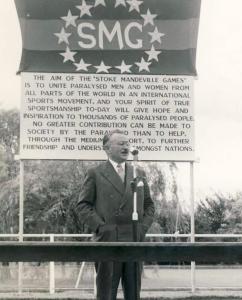 Introduction
Introduction
My dad coached multiple sports throughout his career and loved to watch sports. So, naturally, we watched the Olympics on television. Jim McKay‘s and Al Michaels‘s voices were as familiar to me as those of baseball announcers Vin Scully, Pete Van Wieren, and Skip Carey and football announcers Keith Jackson and Howard Cosell.
By 1984, I had started running Cross Country and Track and dreamed of running one of the distance races. The organizers for the 1984 Los Angeles Games, soon to be the home to the 2028 Games, released an album featuring the hottest acts in American music. This was the debut of John Williams’ “Olympic Fanfare and Theme” and also contained tracks by Toto, Quincy Jones, Herbie Hancock, iconic guitarist Bob James, and the composer of “Rocky” and “Karate Kid”, Bill Conti. I wore the grooves out on my copy and daydreamed during every listen of wearing the red, white, and blue and lowering my neck to receive a gold medal.
Movies about the Olympics and Olympic athletes are almost as old as cinema. The following 15 movies will educate you about the Olympic and Paralympic experience, show you the grit and determination of the athletes, and inspire you to go citius, altius, fortius – which means faster, higher, stronger in whatever you seek to accomplish.
I start my countdown at 13 because #7 and #6 both include two movies. You’ll understand as you read the list.
No. 13. – The Cutting Edge (1992)
Plot:
Couples skater Kate Moseley (played by Moira Kelly, The West Wing) has never made it all the way to the gold medal podium. Perhaps a new coach and a new partner—an injured hockey player, Doug Dorsey (played by D.B. Sweeney, (Eight Men Out), looking for a comeback—will help her achieve her winter Olympic dreams.
Review:
This movie is not for younger viewers. In essence, it is a romantic comedy, and all of the mounting tension of “will they or won’t they” is wrapped up in the skating. In this movie, skating is an analogy for intimacy in all definitions of the word. Instead of a love scene at the peak of the action, we receive an Olympic-length program.
The skating is choreographed by Robin Cousins, the 1980 gold medalist, and is performed by a long list of skaters who can land the jumps and nail the spins.
The movie’s rising tension keeps you engaged and makes for a rewarding movie experience.
Although the Olympic rules and procedures are now outdated, the difficulty of nailing the moves is no less impressive.
Watch For:
Watch how the word—and the skating device—”toe pick” are used in the movie.
Why it Inspires:
The Cutting Edge is about four underdogs coming together with a common vision. Tony Gilroy—who would go on to write Armageddon, The Bourne Identity, and Rogue One: A Star Wars Story—adds enough paint and strokes to the canvas about Kate’s dad, Kate, Doug, and the coach to cause us to care about each person. So, at the climax of the movie, satisfaction comes at you from every angle. The past-his-prime coach sees his career redeemed. The skaters know they performed the routine of their lives. Dad knows that even if there is no medal conferred, all of the money, time, and energy are worth it.
No. 12. – Olympia
Plot:
Adolf Hitler and Joseph Goebbels commissioned and paid for this documentary to show the world how modern and powerful Germany was. The movie’s director, Leni Riefenstahl, wanted to showcase the glory of the Olympic Games. She brought her vision to life. The guy with the mustache and his propaganda goon were shown up by Jesse Owens and the Olympic Spirit.
Imagine the greatest super-edit of the Olympics, and you get the concept of Olympia. Much of why we have the pomp and circumstance during every Olympic Games grew out of this movie. Let me be clear, not the Berlin Olympics, but Riefenstahl’s vision.
Review:
Riefenstahl’s masterpiece brings more excitement to the 1936 games than NBC can hype up in a modern Olympiad. She reimagines ancient Greece, shows off the glory of the parade of nations, and then condenses all of the events with close-ups and crowd shots. You will feel the Olympics.
Watch For:
Jesse Owens’ 100-meter world record. She builds anticipation by cutting back and forth between other athletes, the starter, and Owens. You know what you’re about to see, but you lean forward toward the screen anyway.
Why It Inspires:
Olympia is pure sport. The drama builds when she switches from full speed to slow motion. We are inspired because of what the athletes accomplished. Riefenstahl never blunts the power of overcoming obstacles to win a medal.
No. 11. – The Best of Men
Plot:
A Jewish doctor escapes Germany and comes to Great Britain with his passion for helping those with spinal cord injuries due to horrific injuries sustained during World War II. In the process of helping the men physically, he also brought them back to life psychologically and, in the process, created adaptive sports and the first Paralympics.
Review:

If you can only watch one movie on this list (or one movie again), this is it. Put this one at the top of your list. Dr. Ludwig Guttmann is one of the greatest heroes of the last century.
I could write for hours about this movie that very few have heard of, and fewer have seen. Written and produced for BBC television, The Best of Men tells a compelling story while confronting one of the worst discriminations that exists: ableism.
As a movie, it wins by showing triumph over great odds. As a cultural touchpoint, it wins by pushing forth a villain who says all of the darkest things we think but don’t say out loud. As characters in the movie confront the villain, our biases are confronted, and we gain a deeper understanding of the world of paraplegics.
If you’re an able-bodied person, you may want the characters’ transformations to be bigger than they are. However, what you need to know is this: for these wounded soldiers, their transformation is the equivalent of you and me gaining multiple superpowers.
The movie moves slowly to give us time to see the transformations, not because the writer and director aren’t capable. You can’t put together a training montage from a Rocky movie for these stories. Thousands of micro-changes and millimeters of growth are happening before your eyes.
Be sure to watch all the way through the credits. When you watch it, you’ll understand.
Watch For:
How the ward celebrates Victory in Europe Day.
Why it Inspires:
I used to think of paraplegics as paralyzed individuals unable to care for themselves. I’ve learned much over the last eight years of parenting an adaptive athlete. Many of Zion’s friends are paraplegics yet lead full and fruitful lives. Many of these same individuals have Paralympic medals hanging in their homes. They are some of the fiercest competitors I’ve ever met.
The Best of Men tells the story of how the Paralympics came to be. Para doesn’t come from the word “paraplegia,” thus meaning “the Olympics of the disabled.” It comes from the word “parallel,” meaning these games are intended to run parallel to the Olympics. Equal in importance, different in execution.
No. 10. – Race
Plot:
More than just a Jesse Owens biopic, Race weaves four stories together.
The movie starts with Jesse Owens headed off to college and continues through the events of the 1936 Berlin Olympics. Along the way, we meet Owens’ coach, Larry Snyder, who would’ve run against Eric Liddell in 1924. We find out why he didn’t. We follow the filmmaker, Leni Riefenstahl, as she battles Joseph Goebbels. We also meet Avery Brundage, an American businessman deeply invested in the Olympic movement, who travels to Berlin to deliver a message.
Review:
The movie has amazing promise and should be part of your movie-watching history, but I believe it could’ve been much more. If you loved Jason Sudeikis in Ted Lasso, you must watch his take on coach Larry Snyder. Perfect casting for many reasons. Casting was the best part of the movie. Jeremy Irons may be my favorite villain of all time.
The movie introduces us to important but forgotten historical figures. It brings the Berlin games to life in amazing color. But as it soars there, the script, acting, and direction are too in love with trying to communicate that the world is messed up. It seems to me they worked hard to stay away from anything that smelled like an inspirational sports movie trope, even if it was true to the history of the events at hand.
Watch For:
Don’t blink. You might miss them. Watch all of the scenes with Jesse Owens’ father. He is silent, but his acting communicates volumes.
Why it Inspires:
Despite its best efforts to not inspire, it does anyway. The victory lap taken by Jesse Owens and German long jumper Luz Long after Owens sets a new world record moves the audience.
No. 9. – Jim Thorpe: All-American
Plot:
This movie follows the classic biopic format of a narrator and flashbacks. We meet Jim Thorpe as a boy and follow his entire career.
Review:
Sure, it’s hard to buy into a then-31-year-old Burt Lancaster as a 16-year-old entering college. Nevertheless, Jim’s story will excite you.
The movie is full of the history of the ill-treatment of Native Americans, football, professional sports, and more. “Jim Thorpe: All-American” is like a time capsule for experiences most of our parents haven’t told us about in detail.
Director Michael Curtiz and screenwriters Douglas Morrow and Everett Freeman don’t shy away from the hard, the anger, the alcohol, the grief, and the Spanish Flu Pandemic. If you’ve gone through difficult times, you’ll relate to Jim and his family.
Note: This movie has come under fire in recent years for its culturally inappropriate references to Native Americans, especially in their speech patterns. I watched it again before writing this article with an open eye to see what other critics were referring to. I didn’t see it. I saw Native Americans being sarcastic about how others characterize them. Could casting have included more Native Americans in the lineup? Sure, but their claims of negative stereotypes are much ado about nothing.
Watch For:
When Jim’s old friends from college come to visit him while he’s playing in the NFL.
Why it Inspires:
Jim Thorpe may have been the greatest athlete our country has ever produced. This movie gives Jim his moment in the sun long before his Olympic medals were restored to him posthumously.
No. 8. – Cool Runnings
Plot:
After a catastrophic blunder in the track and field trials for the summer Olympics, superstar sprinter Derice Bannock decides he’s going to the Olympics anyway. But the Winter Olympics as a bobsledder. He gathers other sprinters he knows, including two others caught up in the blunder, and then finds a disgraced, banished, and gambling former bobsled expert and convinces him to coach the team.
Review:
Loosely based on the real-life story of the first time Jamaica sent a bobsled team to the Winter Olympics, this Disney film brings the smiles, laughs, tears, and triumphs of their story. John Candy portrays Irv Blitzer, which is a total fictionalization of Howard Siler, a former US bobsledder and coach of US bobsledding who chose to coach the Jamaicans when they approached him because he found them “to be serious and committed athletes.” Siler was not a lush nor a cheater. He was never banned from competition.
Even though Irv is not based in reality, he is my favorite John Candy role because you see the entire range of emotion in his delivery. You don’t often see a wounded and serious Candy. It’s spectacular.
Cool Runnings is a perfect hero’s quest. The team overcomes obstacles, deals with enemies, and struggles to the climax. You’ll ask, “Will they make it?” a dozen times.
Favorite Scene:
While in an inexpensive hotel in Calgary, Irv goes to Derice’s hotel room and finds him sitting on the floor studying the turns on the bobsled track. The scene sets up the next one, but to me, it is the perfect true sportsman scene.
Why it Inspires:
Have you ever been laughed at? Counted out? Thought incapable of doing something? This movie will inspire you to keep going and show the world who you really are.
No. 7. – Unbroken and Unbroken: Path to Redemption
I have grouped both movies here because you should watch both. Better yet, read the Laura Hillenbrand biography, which is one of the greatest pieces of American literature in the last 25 years.
Plot:
Unbroken presents the story of Italian immigrant Louis Zamperini, who discovers his athletic ability and makes the US Olympic team to run the 1500 meters in Berlin. Later, as a World War II bombardier on a B-24, he and the crew crashed into the ocean. He and two survivors spent 47 days in a raft before being caught by the Japanese navy and spending the rest of the war in a brutal prisoner-of-war camp under the torture of the leader nicknamed “The Bird.” He returns home as a hero.
The second movie, Unbroken: Path to Redemption, picks up and tells the challenges of dealing with trauma. Returning home, the brutalization of his time in captivity led him to alcoholism and to the brink of divorce. Zamperini plots ways to return to Japan to hunt down and murder “The Bird,” but his alcoholism keeps him from fulfilling his plans. Against his will, he attends Billy Graham’s landmark Los Angeles crusade in 1949. He leaves angry, only to return the next night and experiences the calling of God on his life to surrender to Jesus Christ in faith.
Review:
If you had asked me, “Want to go see a movie written by the Coen Brothers and directed by Angelina Jolie?” I would’ve said no.
If you had asked me if I wanted to see the biography, Unbroken, adapted for the screen by the Coen Brothers and Angelina Jolie, I would’ve expressed my worry about Louis’s story being diluted and distorted.
I couldn’t have been more wrong. Zamp’s courage, perseverance, and heartbreak broke through every barrier.
If you had asked me about a sequel being made by a different set of writers, directors, and crew in the Christian film industry, I would’ve sighed.
Then, if you had told me that Bill Reeves was at the helm, I would’ve breathed a sigh of relief. The sequel is well-acted and captures the magic of 1950s Los Angeles. The special effects are excellent and surprising. And Zamp’s story of faith is not overwrought or coated in sugar. Asking Billy Graham’s grandson to portray the great evangelist was a stroke of genius.
Both movies are worth your time, but allow some time to lapse between viewings. Please also read or listen to the book.
Watch For:
Watch how the radio (and recorded sound) is used throughout the film, and watch Louis’ mother every time the radio appears front and center.
Why it Inspires:
As his story grew and grew, I was overwhelmed by how much he endured. Louis is perseverance personified.
True stories don’t get more dramatic than this. Knowing all he went through, I am so grateful that he responded to the call of Christ. God has used him in the lives of thousands of young men.
No. 6. – Prefontaine/Without Limits
Once again, I put two movies in the same slot. Two different production companies rushed to release movies about Steve Prefontaine. The result is two movies that hit all of the same plot points, with different casts taking different angles on the items that have become mythology.
Plot:
The world’s fastest high school middle distance runner is courted by every cross country and track program in America except the one he wants to be a part of. Once at the University of Oregon, Steve Prefontaine stretches every limit, pushes every boundary, changes every rule, and runs the competition into the ground. But what drives him? And will he achieve Olympic immortality?
Review:
As a runner myself, I’ve always been fascinated with two stories that are polar opposites. Eric Liddell and Steve Prefontaine.
Both movies are solid. Without Limits is produced by Tom Cruise’s production company and has a great cast. Prefontaine is told like a documentary. If I could take the cast from Without Limits and have them act in Prefontaine, I would do so. Based on my study of famed coach and the creator of the waffle sole of Nike shoes, Bill Bowerman, I believe if you took the gruffness of R. Lee Ermey’s performance and added the intelligence and restraint of Donald Sutherland’s take, you’d have a perfect Bowerman.
Watch For:
Both movies follow the exact same list of historical events. My favorite scene in both is the Olympic 5,000 meters. Without Limits has more archival footage and audio from the ABC broadcast. Prefontaine does a better job of putting the viewer on the track.
Why it Inspires:
We all struggle to hold our convictions. We all feel peer pressure and are tempted to weaken our beliefs from time to time. The story of Steve Prefontaine will inspire you to hold to your convictions no matter what. Pre is a flawed hero and shows his scars, but his iron grip on what he believes will make you stand and cheer.
No. 5. – Murderball
Plot:
What happens when an all-star player for the USA doesn’t make the cut? Joe Soares leaves the US to coach Canada all the way to the Paralympics. Who will be victorious: the US, the powerhouse since the game began, or Canada, the scrappy team coached by the one scorned?
Review:
This Oscar-nominated documentary created a groundswell of interest in the rough and tumble full contact sport in adaptive athletics. Created in Canada by quadriplegics for quadriplegics, the sport is part chess match, part demolition derby, but all glorious. When the sport became so popular that a groundswell urged its inclusion in the Paralympics, the name had to change to wheelchair rugby. Could you imagine, “The gold medal for Murderball goes to…”? So, they named it after the most violent team sport in the world.
Like The Best of Men, you are transported to “the special world” where men have sustained traumatic brain injuries and must learn everything again—how to use the restroom, how to express themselves sexually, how to function in an able-bodied world, and how to win.
The movie is well-paced and alternates among the stories of the athletes, the competitions leading up to and including the Paralympics, the everyday challenges of life in a wheelchair, and answering the question, “Is Joe Soares a jerk or just a hard-nosed competitor?”
Murderball caught fire, just like the sport, and the action was added to Friday Night Lights and My Name is Earl among others. Games at the Paralympics sell out.
Murderball means the world to me, not that my 18-year-old is wearing the red, white, and blue as a member of Team USA’s wheelchair rugby team. At the time of this writing, the team is in its final US-based camp before leaving for Paris on August 20 for training in-country and games beginning August 29, culminating in the gold medal match on September 3. For up-to-the-minute information, find the sport on Peacock. For more information about Zion, visit his website.
See the wheelchair rugby lineup for Paris 2024.
Watch For:
Bob Lujano is now a friend and still plays wheelchair rugby for The Lakeshore Foundation. We’ve loved getting to know him and his wife. Watch for his scene in the cardboard box.
Why it Inspires:
If you talk to high-level adaptive athletes, they will tell you they hate to inspire. They have accepted their physical limitations. (Elite able-bodied athletes have them, too, you know.) Murderball players are winners. You will be moved by the same things that move you about Usain Bolt, Simone Biles, and Mark Spitz: determination, grit, and perseverance.
No. 4. – The Boys in the Boat
Plot:
In a mining community on the West Coast, far from the blue-blood waters of the Ivy League, sons of miners, loggers, and others who escaped the Great Depression learn one of the most elegant sports in the world. How far will they go? Do they have what it takes to win?
Review:
Three stories about the Berlin Olympics show up in our list because those few days in August 1936 changed the world. While it doesn’t quite reach the heights of Laura Hillenbrand’s Unbroken, Daniel James Brown’s multi-biography of the nine athletes and their coaches is brilliant and worth every second of reading or listening.
The movie primarily follows Joe Rantz, and the travails of homelessness, hunger, and family struggles.
Watch For:
The book makes much of George Pocock, the British shipwright who crafts the crew shells not only for the University of Washington but also for many of the greatest teams in the world. In the movie, Pocock is the sage and mentor. Every scene in his boathouse working on the shells is worth examining.
Why it Inspires:
Director George Clooney crafts an underdog story with scrap and gumption. He doesn’t need an amped-up fantasy script to create the climax. Everything you see on screen happened in Berlin. You will stand and cheer because these men are worthy of the honor.
No. 3. – Athens 1896: The First Olympics
Plot:
Baron Pierre de Coubertin travels to the United States to convince Princeton classics professor Dr. William Milligan Sloane to field a team for the first modern Olympics. Every Ivy League school resists the idea of these foolhardy competitions and forbids their students from participating. Meanwhile, in Greece, Great Britain, and Australia, athletes strive to make their teams.
Review:
Prior to the 1984 games in Los Angeles, the United States Olympic Committee was determined to make it profitable. Enter Hollywood. John Williams composed a new fanfare and anthem that is now as iconic as “Bugler’s Dream.” The record the anthem appeared on contained music from 1980s superstars like Toto, Giorgio Moroder, Herbie Hancock, and more. Then, of course, they created a four-hour, two-part miniseries that took TV audiences by surprise and became the hit of the spring in the run-up to the games that would become one of the most memorable Olympics with performances from Edwin Moses, Carl Lewis, and Mary Lou Retton,
Some of the 1980s’ most familiar TV faces appear in The First Olympics with David Ogden Stiers and Angela Lansbury leading the way. If you’re of a certain age, you’ll recognize many other faces if you visit the IMDb page.
The story moves at a moderate TV drama pace compared to today’s silver screen blockbusters, but stick with it. The stories woven by teleplay writer Charles Gary Allison will build at an appropriate speed. You’ll feel the cliffhanger at the end of part one, and then you won’t stop until return back to the US from Athens.
I also laugh out loud at the first exhibition at the women’s school and about which anthem they choose to play for the USA.
If you enjoy the Olympics, it is worth the time to watch this dramatic version of the history.
Watch For:
Watch how women inspire and move the Olympic movement forward.
Also, be sure to watch the field events at the Olympics.
Why it Inspires:
To be transparent, I cry every time I watch this movie. I cry at the first gold medal. I cry at the marathon. I cry at the dock when they return to the US. I tear up at a dozen other spots in the movie. Call me a softie, I don’t care.
These athletes aren’t competing against records and icons. They are competing against themselves in the purest version of sport.
And you can watch the mini-series in its entirety at these YouTube links:
No. 2. – Chariots of Fire
Plot:
In Great Britain, two sprinters have the greatest potential to bring glory and gold to the Kingdom. But will their own personal convictions keep them from the podium at the 1924 Olympic Games in Paris?
Review:
I’ve seen this movie, the surprise winner of the Academy Award for Best Picture in 1982 (against Raiders of the Lost Ark and On Golden Pond), at least 40 times. I see something new in it every time I watch it.
This is not a “sports movie.” Chariots of Fire is a study of conviction, mettle, determination, and self-doubt. Take that four-word checklist and watch each of the main characters wrestle with them. Abrahams and Liddell agonize, of course, but so do the other athletes, their families, and coaches.
I’m so grateful this movie has an instantly recognizable soundtrack like no other in sports movies. Just a few notes, and you see running. And if you’ve seen the movie, when you hear a couple of notes, you instantly remember the conviction, mettle, determination, and self-doubt.
The movie does so without preaching, without being “on the nose,” and without excess exposition. You will watch, listen to, and feel this movie.
The movie departs from history in order to tell the story within 120 minutes and illustrate the genuine conflict the athletes face. Research the nuances from history for yourself. It won’t be a waste of your time.
Eric Liddell is worthy of further study. Authors have researched and crafted many excellent books of his missionary years. My favorite two are Pure Gold by David McCasland and The Final Race by Eric Eichinger with Eva Marie Everson. The Day of Discovery published a DVD containing newly discovered archival footage. Also, Eric Metaxas’ Seven Men contains a power-punch chapter on him.
Did the movie inspire this much literary and video scrutiny? Was he that fast? Was Liddell’s Olympic victory that iconic? No. It is what Eric did after his gold medal that deserves our attention. Chariots of Fire dedicates one screen to what these books illuminate.
Watch for:
The most often quoted scene isn’t a direct quote from Liddell’s journals, written about in his books, or recounted in his biographies, but it does reflect the character of the man. He tells his sister, who doesn’t want him to go to the Olympics but to return to the mission field, “I believe God made me for a purpose, but He also made me fast. And when I run, I feel His pleasure.”
I know the line is coming. I know it by heart. I know it’s not a direct quote. Nevertheless, I get chills every time I hear it.
Also, please hold on until the movie is deep in credits. Be sure to read all of the words on the screen after the dénouement.
Why it Inspires:
Where do you feel God’s pleasure? Why do you avoid leaning into this reality in your life? Unless you are a cynic, you will stand up after watching Chariots with greater purpose and vision.
No. 1. – Miracle
Plot:
The US hasn’t won a gold medal in ice hockey in five Olympiads. The way the Soviet Union and Eastern Europe are training and playing, we might never win again. One coach has a different philosophy: what if he combined the best US players with lessons learned from Soviet and Canadian hockey? He believes he could medal, and perhaps bring home the gold. But at what cost? The hockey industrial complex in America and geopolitics will try to stop him.
Review:
I hear your criticism. It’s Disney. It uses many sports movie tropes. It only works because the real moment is so powerful.
Nah. Eric Guggenheim (Parenthood, and the revival of Magnum, P.I.) nailed it all. Production Designer John Willett, Art Directors Ross Dempster and Martina Javorova, Set Decorator Mary-Lou Storey, and Costume Designer Tom Bronson give him an amazing canvas. Ice hockey players taught to act bring the story to life. And cinematographer Dan Stoloff puts the cameras—and thus us—on the ice.
Al Michaels joyfully came back to the microphone to re-record the edited play-by-play of the USA versus USSR game for the movie, but his involvement was just icing on the cake. (And in case you don’t know, the audio engineers and editors cut back to the original audio of the call for the ultimate moment.
This movie examines coach Herb Brooks’s philosophy. It breaks it down and puts it back together again, and we are better for it.
This movie has everything from player choice to conflict, defeat “in the mouth of the cave,” victory, and resurrection.
If you’ve avoided it or haven’t watched it in years, watch it again.
P.S. My friends are shocked that I rate “Miracle” as number one instead of “Chariots.”
Watch For:
Ask yourself if you could do any of the training moves the team endures off the ice.
Pay special attention to what happens to Herb Brooks after the US advances to the medal round. Where does he go? What does he do? What does the team do?
Why it Inspires:
Herb Brooks (Kurt Russell) gives a number of speeches throughout the movie. Listen to his locker room speech before the USSR game and the monologue during the dénouement. Guggenheim nails why this story inspires.












